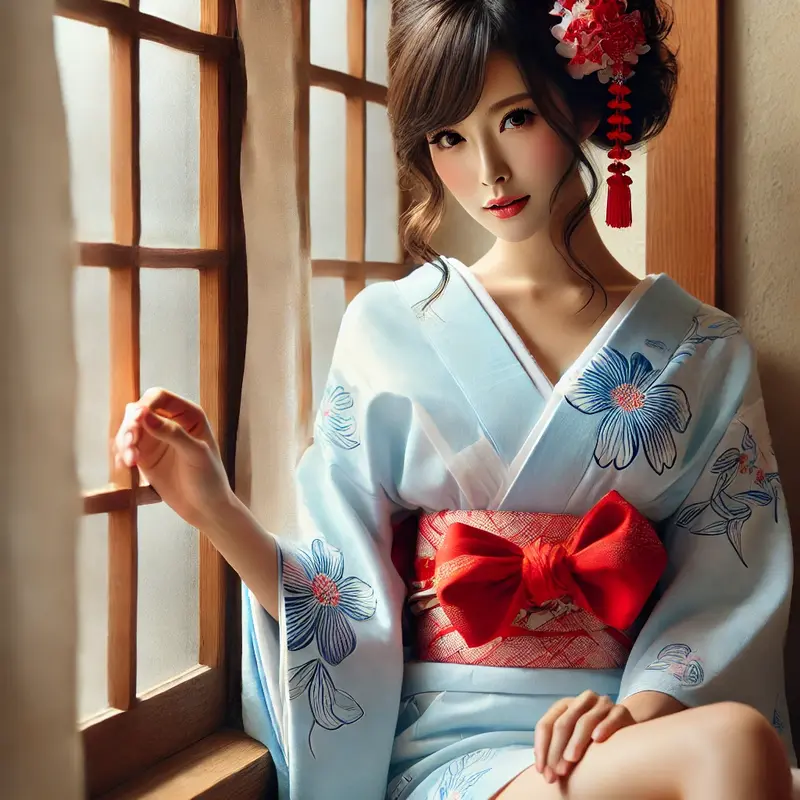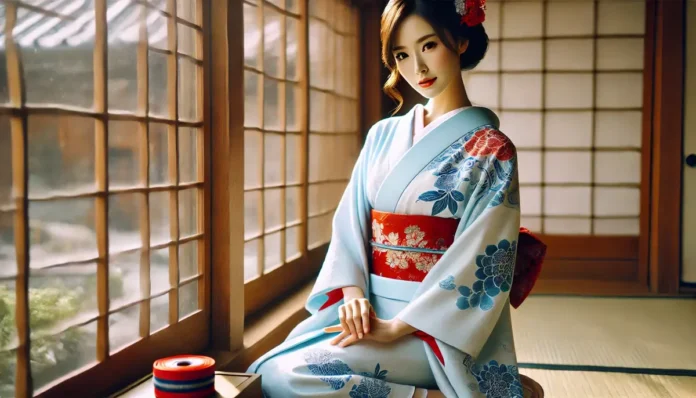The evolution of Geisha reflects not just the changes in Japanese society but also the enduring nature of traditional arts in a rapidly modernizing world.
From their beginnings in feudal Japan to their transformation into modern Geisha, their journey showcases resilience, adaptability, and a deep commitment to preserving cultural heritage.
This article explores the milestones in the evolution of Geisha, examining how their roles, art forms, and societal positions have transformed over time.
The Evolution of Geisha
Defining Geisha: Artists of Tradition
Geisha, meaning “artist,” are highly trained performers skilled in music, dance, and social etiquette.
Unlike courtesans, Geisha have always focused on mastering traditional arts rather than romantic services.
Their art embodies elegance, and their purpose is to entertain through refined performances that highlight Japanese cultural values.
Key Milestones in the Evolution of Geisha

The evolution of Geisha is marked by significant milestones that highlight their adaptability and enduring influence across centuries.
From their early origins to their role in modern society, these pivotal moments reveal how Geisha have preserved their traditions while embracing change. Below are the key milestones that define their remarkable journey.
1. The Feudal Beginnings (17th–18th Century)
The evolution of Geisha began during Japan’s Edo period (1603–1868), a time when the country enjoyed peace and prosperity under Tokugawa rule. Entertainment districts, known as hanamachi, flourished, creating spaces where Geisha could thrive.
- Initially, male performers called taikomochi dominated the entertainment scene, but women gradually took over, bringing a unique grace and artistry.
- By the mid-1700s, female Geisha had become the central figures in these districts, distinguished by their skill in traditional arts like the shamisen (a stringed instrument) and mai (traditional dance).
- Example: The Gion district in Kyoto became a hub for Geisha culture, a reputation it maintains to this day.
Readmore: The History of Geisha: Origins of Japan’s Art Tradition
2. Adapting to Modernization (Meiji Restoration: 1868–1912)
The Meiji era brought rapid modernization and Western influences, challenging traditional professions, including Geisha.
- Geisha adapted by incorporating Western musical instruments like violins into their performances while preserving core Japanese elements.
- Their kimonos also began to reflect contemporary trends, blending traditional patterns with Western-inspired designs.
- Despite societal changes, Geisha remained a symbol of Japanese identity, balancing innovation with tradition.
3. Surviving Cultural Shifts (Post-War Period: 1945–1950s)
The aftermath of World War II saw significant cultural shifts in Japan, with Western-style entertainment like movies and jazz clubs gaining popularity.
- The number of Geisha declined dramatically, as many women left the profession for new opportunities.
- Geisha who remained focused on preserving traditional Japanese arts, offering exclusive performances to a smaller but dedicated audience.
- Example: The annual Miyako Odori (Cherry Blossom Dance) in Kyoto became a showcase of Geisha artistry, helping to maintain their relevance.
4. The Role of Modern Geisha (2000s–Present)
In the 21st century, modern Geisha have embraced their role as cultural ambassadors, representing Japan’s rich artistic heritage.
- Today, Geisha are primarily found in historic districts like Kyoto’s Gion, where they perform in exclusive teahouses (ochaya) for high-profile clients.
- They also participate in cultural events and festivals, such as the Gion Matsuri, showcasing their art to both domestic and international audiences.
- While their numbers have declined compared to the Edo period, modern Geisha continue to captivate audiences with their elegance and mastery of tradition.
The Significance of Geisha’s Evolution
The evolution of Geisha is not merely a historical narrative; it is a powerful testament to their ability to adapt and endure through centuries of social, cultural, and economic upheavals.
As symbols of elegance and artistry, Geisha have managed to preserve their traditional roles while embracing modern influences, ensuring their continued relevance in an ever-changing world.
1. Adaptability Amid Societal Changes
The resilience of Geisha lies in their adaptability to shifting societal norms and expectations.
During the Meiji Restoration, when Westernization swept across Japan, Geisha skillfully incorporated Western musical instruments and fashion elements into their repertoire without compromising their core identity.
Similarly, in the post-war period, when traditional professions faced decline, Geisha focused on maintaining the integrity of Japanese arts by offering exclusive performances and participating in cultural preservation efforts.
Example: Geisha incorporated the violin into their performances during the Meiji era, blending this Western instrument with traditional Japanese compositions to appeal to evolving tastes.
2. Guardians of Traditional Arts
Throughout history, Geisha have served as custodians of Japan’s traditional arts, including dance (mai), music (shamisen), and the tea ceremony (sado).
These arts, passed down through generations, represent a critical aspect of Japan’s cultural heritage.
By maintaining these traditions, Geisha ensure that younger generations continue to learn and appreciate the artistic expressions that define Japanese identity.
Key Contributions:
- Their performances at events like the Miyako Odori (Cherry Blossom Dance) in Kyoto offer a platform to showcase traditional Japanese dance to both locals and international visitors.
- Geisha actively mentor younger apprentices (Maiko), creating a lineage that safeguards the survival of these art forms.
3. Cultural Icons in a Globalized World
In the modern era, Geisha have transcended their traditional roles to become global symbols of Japanese culture.
Their distinctive appearance, characterized by elaborate kimonos, white makeup, and intricate hairstyles, has become an enduring image associated with Japan worldwide.
By participating in international cultural exchanges and festivals, Geisha represent the grace and sophistication of Japanese traditions on a global stage.
Example: Events like the Gion Matsuri attract thousands of tourists, providing an opportunity for Geisha to showcase their artistry while promoting Japanese culture internationally.
4. Balancing Tradition and Modernity
The significance of the evolution of Geisha lies in their ability to balance the preservation of tradition with the demands of modernity.
While their art remains rooted in classical Japanese culture, Geisha have embraced modern elements, such as leveraging media and tourism, to sustain their relevance.
For instance, documentaries, books, and films like Memoirs of a Geisha have sparked global interest in their lifestyle and art.
Modern Adaptations:
- Geisha have embraced modern tourism by offering carefully curated experiences for visitors, such as observing a tea ceremony or attending exclusive dance performances.
- Social media platforms and documentaries have allowed them to reach broader audiences, ensuring that their traditions remain visible in the digital age.
5. Reflecting the Broader Narrative of Japanese Culture
The evolution of Geisha mirrors the broader story of Japanese culture—deeply rooted in tradition yet remarkably flexible in adapting to external influences.
Like Japan itself, which has maintained its unique identity while engaging with globalization, Geisha embody the ability to evolve without losing their essence.
Their journey illustrates how cultural heritage can remain relevant and vibrant in a modern context, serving as a bridge between the past and the present.
The significance of the evolution of Geisha extends beyond their role as entertainers; it highlights their enduring contribution to the preservation of Japanese culture and the adaptability required to thrive in a changing world.
By balancing tradition and modernity, Geisha not only sustain their unique art forms but also inspire a deeper appreciation of Japan’s cultural legacy.
Their journey serves as a reminder that true resilience lies in embracing change while staying true to one’s roots.
Conclusion
The evolution of Geisha from their origins in feudal Japan to the role of modern Geisha highlights their ability to adapt to societal shifts while preserving the essence of Japanese artistry, a legacy deeply valued by Japan people.
Today, Geisha continue to inspire awe as guardians of tradition and symbols of cultural continuity, offering a window into Japan’s artistic soul for future generations.
References
- Dalby, Liza Crihfield. Geisha. Berkeley: University of California Press, 1983.
- A comprehensive study of Geisha culture and its historical evolution, written by an anthropologist who trained as a Geisha.
- Downer, Lesley. Women of the Pleasure Quarters: The Secret History of the Geisha. New York: Broadway Books, 2001.
- Explores the historical and cultural transformation of Geisha through in-depth research and storytelling.
- Gordon, Andrew. A Modern History of Japan: From Tokugawa Times to the Present. Oxford: Oxford University Press, 2014.
- Provides a detailed overview of Japanese history, including the societal changes that shaped the role of Geisha.
- Hendry, Joy. Understanding Japanese Society. London: Routledge, 2003.
- Discusses the cultural and social context of Japanese traditions, including the evolution of Geisha.
- Iwasaki, Mineko, and Rande Brown. Geisha, A Life. New York: Atria Books, 2002.
- A memoir by a former Geisha, shedding light on the profession’s transformation over the years.
- Nishiyama, Matsunosuke. Edo Culture: Daily Life and Diversions in Urban Japan, 1600–1868. Honolulu: University of Hawaii Press, 1997.
- Examines the Edo-period culture that laid the foundation for the rise of Geisha.
- Varley, H. Paul. Japanese Culture. Honolulu: University of Hawaii Press, 2000.
- An essential resource on the development of Japanese arts and traditions, including Geisha culture.
- Yamakawa, Kikue. Women of the Mito Domain: Recollections of Samurai Family Life. Tokyo: University of Tokyo Press, 2001.
- Offers insights into the lives of women in feudal Japan, with references to the societal role of Geisha.
- Gion Kobu Kaburenjo. The World of Geisha. Kyoto: Kyoto Tourist Information Center, 2015.
- A guide detailing the history and cultural practices of Geisha in the renowned Gion district.
- Bennett, Andrew. “Geisha: Guardians of Traditional Japanese Culture.” Asian Studies Review, vol. 42, no. 3, 2020, pp. 231–248.
- A scholarly article analyzing the role of Geisha as preservers of Japanese cultural heritage through the ages.
These references provide a thorough foundation for understanding the historical and cultural evolution of Geisha.








